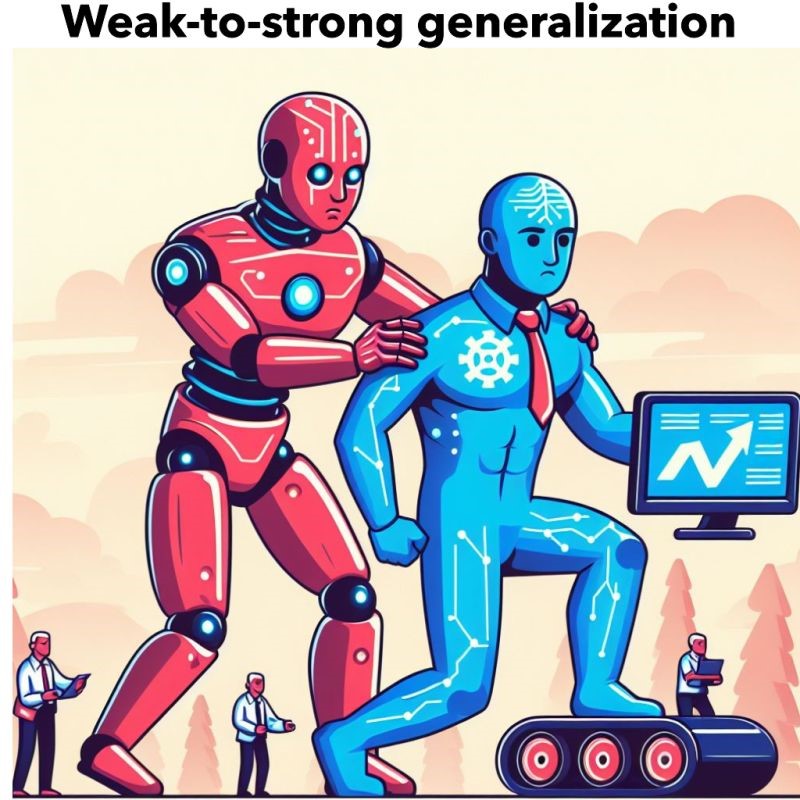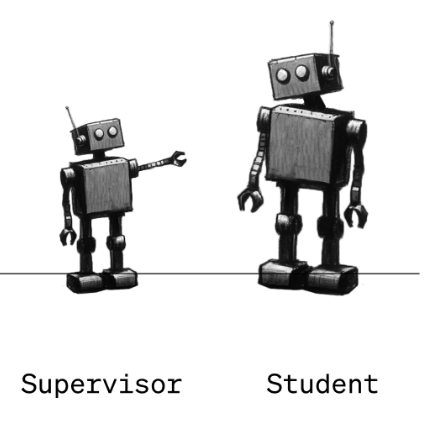Weak to Strong Generalization
Weak to Strong Generalization: Bridging the Gap Between Limited Data and Powerful Models

In the realm of artificial intelligence, particularly machine learning, the quest for ever-more powerful models is ongoing. However, these powerful models often require vast amounts of labelled data to train effectively. This can be a significant bottleneck, as acquiring and labelling data can be expensive and time-consuming. Here's where the concept of weak-to-strong generalization comes into play.

What is Weak-to-Strong Generalization?
Weak-to-strong generalization is a training paradigm that leverages the strengths of both weak and strong models.
Weak Model (The Supervisor): This model, typically simpler and easier to train, is used to analyse a large, unlabelled dataset and extract general patterns or insights.
Strong Model (The Student): This is the more powerful model that you ultimately want to use for your specific task. It is trained on a smaller, labelled dataset relevant to the task at hand.

The Synergy of Weak and Strong Models:
The weak model acts as a kind of "supervisor" for the strong model. By analysing the vast unlabelled data, it guides the strong model towards useful generalizations and helps it avoid overfitting to the limited labelled training data. This allows the strong model to perform well even on out-of-distribution examples, which are data points that differ significantly from the training data.
Benefits of Weak-to-Strong Generalization:
Improved Generalizability: By leveraging the insights from the weak model, the strong model can perform better on unseen data, leading to more robust and reliable performance.
Reduced Data Labelling Costs: The reliance on a large unlabelled dataset for initial training reduces the need for extensive labelling of specific task data, saving time and resources.
Scalability Across Distributions: This approach can be particularly useful when dealing with tasks where data distribution can vary significantly. The weak model can help the strong model adapt to these variations.
Real-World Applications:
Weak-to-strong generalization has shown promise in various applications, including:
Natural Language Processing (NLP): Weak models might pre-train on massive text corpora to learn general language structures, while strong models focus on specific NLP tasks like sentiment analysis or machine translation.
Computer Vision: Weak models can analyse large image datasets to identify basic shapes and patterns, while strong models leverage this knowledge for object detection or image classification.
The Future of Weak-to-Strong Generalization:
As we continue to develop more powerful AI models, weak-to-strong generalization is likely to play a crucial role in bridging the gap between model capabilities and data availability. By effectively combining the strengths of weak and strong models, we can unlock the full potential of AI for solving complex real-world problems.
Conclusion: Understanding the spectrum of generalizations is crucial for critical thinking and decision-making. While weak generalizations may lead to misconceptions or errors, strong generalizations provide a solid foundation for understanding the world around us. By navigating through weak to strong generalizations, we can cultivate a more accurate and nuanced perspective, enabling us to make informed judgments and navigate life's complexities with greater clarity.



